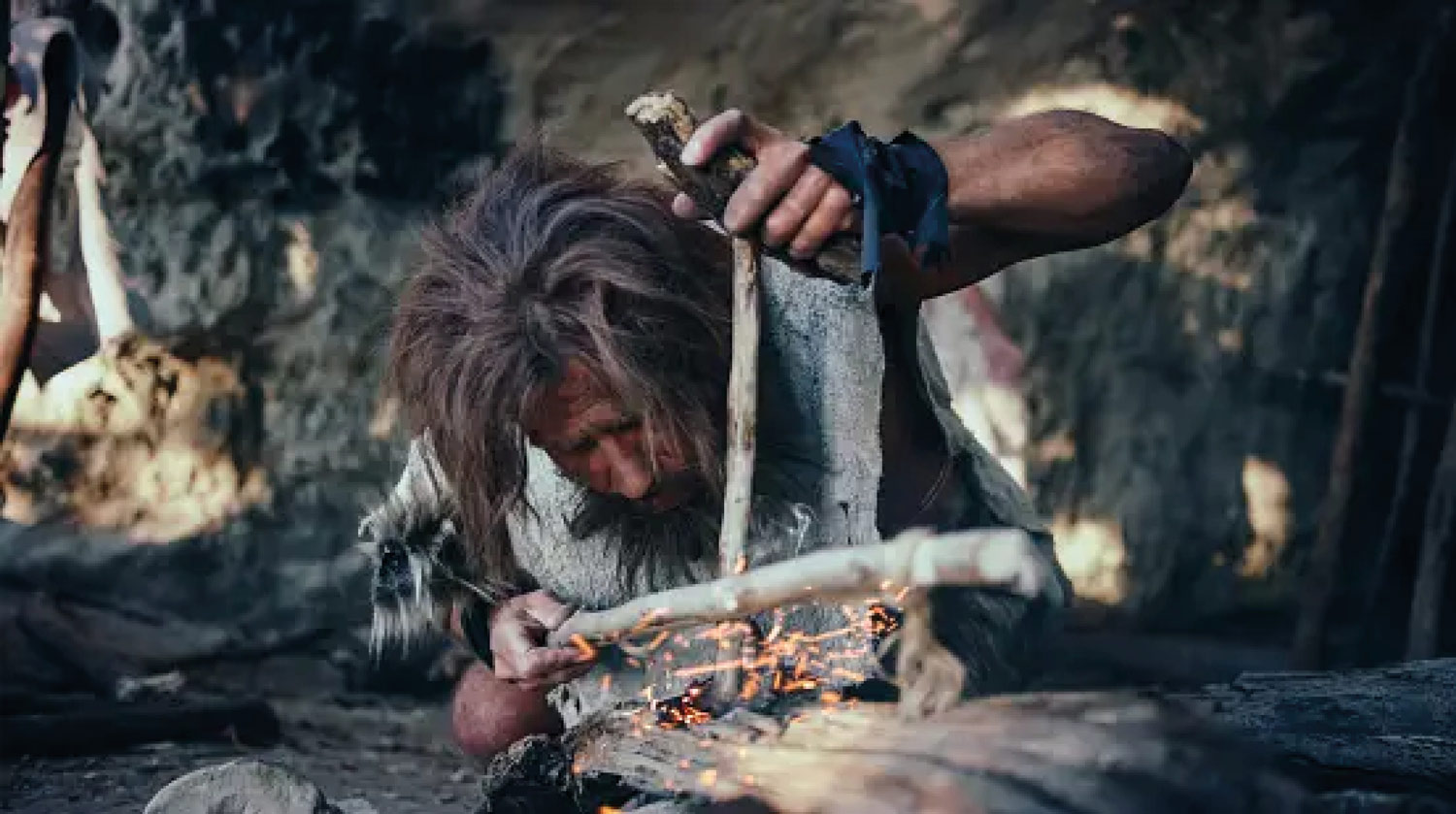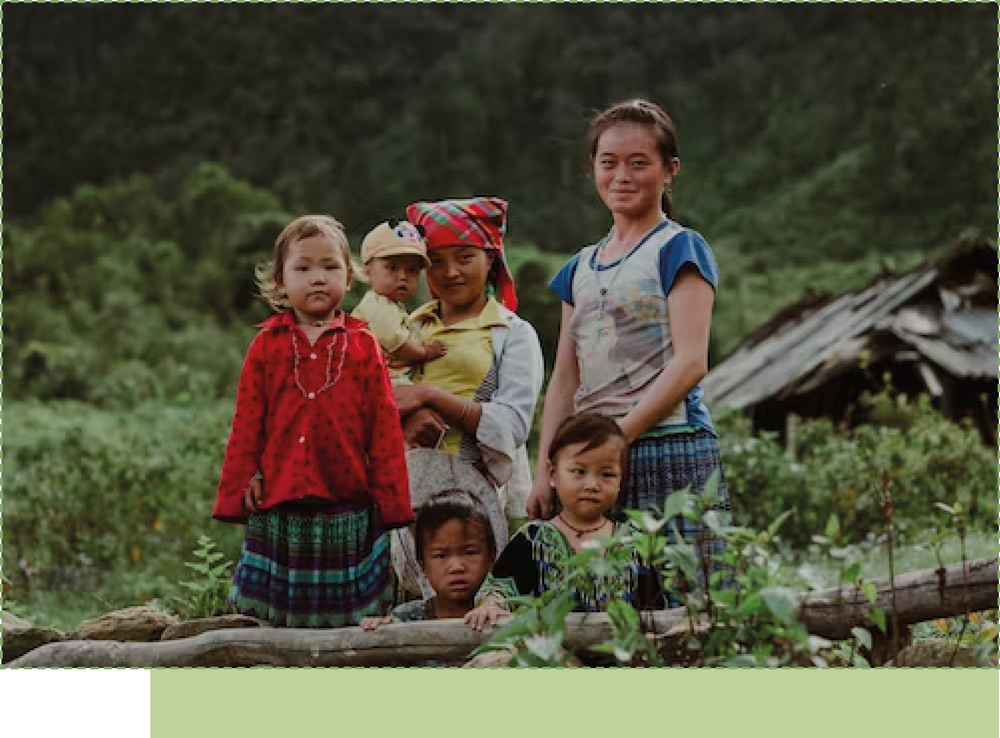
Learning, Education, and Technology in Deep Historical Perspective
Once upon a time, long, long, ago, growing children learned everything they would need to know as adults simply by watching others. Everything.
Until a child is weaned, they are closely and constantly attended by their mother.3 But after weaning occurs – usually between ages 1 and 2 – she and the father no longer feel responsible for the day to day, hour by hour, raising of their child. They have adult concerns to tend to, many of which relate to the feeding of their family and others in their settlement. But in one way, parents in most traditional societies do retain responsibility: they ensure their children internalize their society’s moral code.
So, if traditional parents do not feel responsible for the day by day, hour by hour raising of their just-weaned child, who does? Usually, it’s the next older sibling or cousin (girls preferred). Yes, the next older child might be only three years older, but that’s how it often works. In the vast majority of cases, these are extended families whose members live in close proximity, sometimes under one roof. Aged grandparents typically take an active interest in their progeny but are not responsible for the toddlers’ hour by hour caretaking.
In many traditional societies, the just-weaned child and his or her slightly older sibling caretaker mingle in with the other children of their settlement or camp. Typically, this is a mixed age, mixed sex band of energetic and curious little explorers who, free of adult supervision, have the run of the local area, including the nearby forest or fields. Now, if you’re like most modern folks, you are aghast at this arrangement, sensing vast scope for danger and mischief.

But that’s not what anthropologists tell us. Instead, they say, traditional children devote some of their unscheduled time to watching adults and older children to figure out how they do whatever they’re doing. They observe and, privately and in small groups, imitate in trial-and-error fashion; they keep at it until they begin getting it right. (If you’re thinking “experiential learning,” you wouldn’t be wrong.) At that point, they begin trying to pitch in with the adults’ activities. LOPI. Their initial attempts are pretty bumbling, of course, but adults welcome their efforts. Why? Because the contributions of every able-bodied settlement member are needed to ensure the group’s survival.
For us to accurately imagine the lives of traditional families, we need to recall that it vastly contrasts with ours in two ways. Their physical environment might be a dense forest, a rocky desert, or a barren mountainside from which families must coax their daily sustenance despite the vagaries of nature. And their familial relationships are animated by values unlike the individualism that drives our modern lives. Each of us (if raised in the U.S. or other Western society) centers our experiences around our individual “self,” which has unique needs, qualities, and capabilities. We appreciate our families, but their main role is to support our autonomy. Traditional people’s lives are inspired by the values of communitarianism, which centers their identity and experiences around their extended family. The “self” is the family. Each member internalizes the family’s aspirations and needs so that the family’s well-being and reputation is each one’s highest priority. The guiding principle is “What I want is what we need.”
Anthropologists believe that the children’s key motive for watching and learning their elders’ ways is to fit in and be accepted as family members. It’s a loving, supportive, always-present group; youngsters want to fully belong.
That’s a highly generalized account of how children learn everything they need to know in traditional societies. There are wide variations in this pattern that we’ll skip for now. My goal isn’t to tell you about traditional child-rearing, but to emphasize that, apart from internalizing the moral code, instruction by parents or teachers plays no role in the process. Yet children become, at astonishingly early ages, contributing members of their extended families who willingly take on increasing responsibilities. All without schools or technology.
So how did modern humans get from there to education and technology?

How LOPI learning became supplemented by something totally new
Education: As applied to growing children, this word’s proper meaning is similar to that of socialization. It refers to children’s internalizing and applying in daily life the values, behavior, and relationship patterns of their community’s culture, gradually readying them for adulthood. In all societies, LOPI is a principal means by which children become educated/socialized. In recent times, however, “education” has begun referring to what goes on in schools. The proper term for formal learning events is instruction, which has a far narrower meaning. In some traditional societies, instruction does play a role in growing children’s education/socialization. For example, during coming-of-age initiations, elders instruct children about key aspects of their community’s norms of behavior.
Technology: This word refers to the application of knowledge to the practical goals of human living, i.e., to the physical or mental (symbolic) manipulation of the environment. This all-inclusive definition applies equally to a stone ax and a nuclear reactor. So, for this article, I will distinguish between a practical activity that one can learn via LOPI, and a technology too complex to be readily mastered by observation. You know how to use a hammer; did an older person sit you down for planned instruction? How about algebra?
Let’s return now to imagining that time, long, long, ago, when growing children learned everything they needed to know as adults simply by watching others. Such times are thought to have prevailed for every human and every society on Earth for hundreds of thousands of years, until roughly 10,000 years ago.
But there came a fateful day when an ancient hunter-gatherer, nomad, or mountain herder had an idea about an improved way to get things done. Let’s imagine that the weather had been favorable and edible plants were abundant. This society had started to store plant material for lean years. Someone had the bright idea that it would be useful to keep records of what had been stored: how much, when, and so on. Her unique idea was how to keep such records.
OK, that’s a story I created out of whole cloth. My point is this: Someone came up with an innovative method of getting work done that could benefit her entire group, if at least a few other group members learned how to use it. But her skill or idea was totally beyond the experience of any other group member. It was too complex for anyone to master by watching, imitating, and pitching-in.
Imagine now that you are there, 10,000 years ago, at the granary with your aunt. You see her deliberately making weird dents in soft clay tablets,4 which in your experience is utterly strange. She responds to your query by saying she’s keeping records. If you’re going to learn to do that, she will need to instruct you.
“She will need to instruct you” indicates that your aunt will need to set aside time for the specific purpose of intentionally helping you master her technique. For this learning task, LOPI isn’t good enough. Instruction will need to occur.
In all societies, from prehistoric through 21st century modern, youngsters rely on observation, imitation, and participation to learn not only normative behavior but also constructive activities such as tilling the soil, erecting a hut, weaving a basket, sewing a dress, baking a birthday cake, or using a push lawn mower. At some point, what we now call apprenticeships came into use in cases where the constructive activity required more skillful precision, such as building boats and fashioning fine ceramics. Early apprenticeships relied on LOPI enhanced by the master’s guidance; planned, deliberate instruction played little or no role.
Notice that tilling the soil and the other five examples I used above have in common that performing them competently does not require the use of letters (or characters), numbers, or other abstract symbols. I put “require” in italics because in today’s world, we expect to learn manual, culinary, and artistic skills largely if not entirely by means of printed or online manuals and recipes, or through formal instruction. But these are not essential. Across millennia, people mastered multiple types of knowledge and skill without using written materials and without formal classroom instruction. They watched, practiced, and learned.
But at some point in time, those ways of learning became insufficient.
Let’s return to my imagined story about the granary woman. Her normal mental process had been to rely solely on thoughts about tangible things and their practical relationships. Somehow, she added the ability to think in terms of qualities, categories, and symbols. In other words, she also began to think about things using abstract concepts, to manipulate those concepts mentally, and to keep track of her manipulations using arbitrary marks – symbols. This mental technology is almost impossible to learn by merely watching, imitating, and practicing, even over long periods of time, because it involves intangible abstractions and seemingly meaningless squiggles on a surface.
This event commenced the millennia-long, game-changing process by which technologically advanced societies separated from traditional ones. In addition, it began the equally long process of making learning via instruction totally indispensable for youth in modernizing societies. As the necessity of instruction grew, schools began to appear. As the complexity of subjects and the number of learners increased, instructors sought ways to facilitate their deliveries. They turned to technologies – educational technologies – beginning with pieces of slate and bits of chalk.
Planned, deliberate instruction and modern society are inextricably linked. What links them is the impossibility of mastering, using only LOPI methods, the symbolic foundation and physical complexity of the skills and knowledge that drive modern life. Technologically advanced societies could not have come into existence in the absence of formal instruction.

Second, when we think about it, we modern folks thank our lucky stars that our ancestors were on the modern side of that millennia-long split. For we are the beneficiaries of myriad advantages that symbolic thinking and its spin-off technologies have bequeathed to us: better nutrition and health, increased geographic and social mobility, rapid communications over distances, and comforts, conveniences, and entertainments of every type imaginable. It’s tempting to view those on the other side of this split as inferior to us mentally. Until a few decades ago, indigenous and traditional societies were commonly labeled as “primitive,” i.e., backward and impaired. For an alternative view, consider these excerpts from the insightful 2015 book by Yuval Noah Harari, Sapiens: A Brief History of Humankind:
Scholars once proclaimed that the Agricultural Revolution was a great leap forward for humanity. They told a tale of progress fueled by human brain power. Evolution produced ever more intelligent people who cheerfully abandoned the grueling, dangerous, and often spartan life of hunter-gatherers.
That tale is a fantasy. There is no evidence that people became more intelligent with time. Ancient hunter-gatherers’ survival depended on the intimate knowledge of the animals they hunted and the plants they gathered. They also mastered the internal world of their own bodies and senses. They listened to the slightest movement in the grass to learn whether a snake might be lurking there. They carefully observed the foliage of trees to discover fruits, beehives, and bird nests. They moved with a minimum of effort and noise, and knew how to sit, walk, and run in the most agile and efficient manner. Varied and constant use of their bodies made them as fit as marathon runners. They had physical dexterity that people today are unable to achieve even after years of practicing yoga or t’ai chi.
There is some evidence that the size of the average Sapiens brain has actually decreased since the age of hunter-gatherers. Survival in that era required superb mental abilities from everyone. At the individual level, they were the most knowledgeable and skillful people in history.5
A few months ago, many of us were riveted by the story of four children, ages 13, 9, 5, and 11 months, who survived the crash of a small plane in the Amazon forest and had to rely on their wits – their accumulated knowledge, skills, and experience-honed instincts – to remain alive. They were members of a nearby indigenous society. Weak but very much alive, they were found after 40 days. Forty days in the jungle. Could you, I, or anyone you know have done that?6
None of the superb mental abilities that enabled them to survive were learned in a classroom. No technology helped them gain detailed familiarity with the infinite forest; they learned all that by observing and pitching in. LOPI. Thanks to our ancient forebears and the technologies they developed across millennia, our modern lives are awash in conveniences and possibilities. But maybe something valuable was lost in the process.
- In some traditional societies, there is a brief period in a growing child’s life when they undergo a rite of passage known as an initiation. Initiation procedures often include adults teaching certain skills, practices, values, and/or tribal knowledge to the initiates.
- See the works of Barbara Rogoff and her collaborators. Dr. Rogoff is professor of psychology at the University of California, Santa Cruz. Visit https://people.ucsc.edu/~brogoff.
- This article’s details about life in traditional societies are based on my 2023 book, How Other Children Learn: What Five Traditional Societies Tell Us about Parenting and Children’s Learning, especially Chapter 8. See my book’s endnotes on pages 209–242, and its six bibliographies.
- I am referring to cuneiform writing, consisting of wedge-shaped impressions in soft clay. The Wikipedia entry for cuneiform includes many clear, close-up photographs of cuneiform tablets.
- These three paragraphs are composed of excerpts from pages 49, 78–79, and 121 of Harari (2015). Light editing enabled the rearranged sentences to be smoothly readable. Italics added. Harari’s contention that the size of the average Sapiens brain has decreased is supported by his endnote 5 on page 418, which cites articles in the journals Nature, American Journal of Human Biology, and Human Nature, and the 2005 book Modern Morphometrics in Physical Anthropology.
- The saga of the four children is more complex than I explain in the text. News reports described their society as “indigenous” but left out the fact that it was in the process of modernization. We know it was modernizing because when the children finally got to a hospital, what did they ask for? Books to read! I believe that if their society had been pre-modern, i.e., more similar to that of hunter-gatherers, the four would have survived their 40 days in the jungle in significantly better condition.